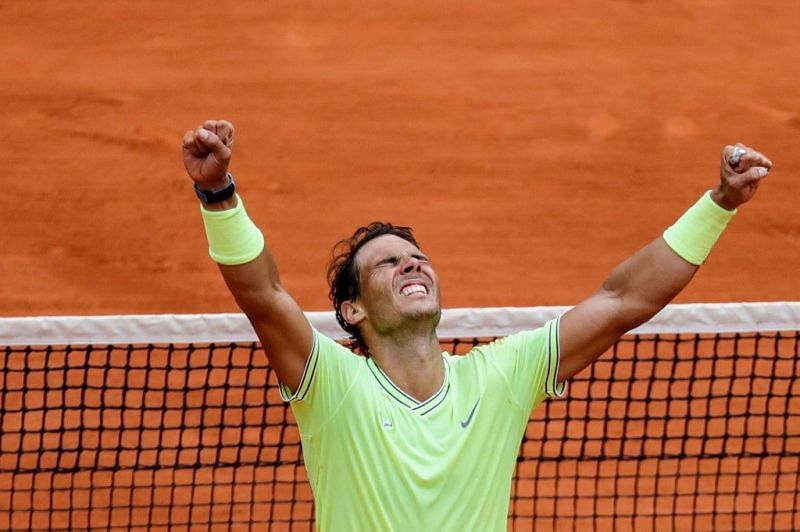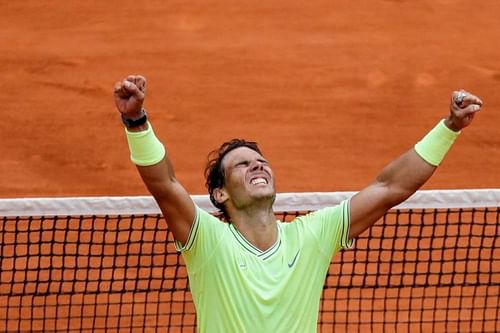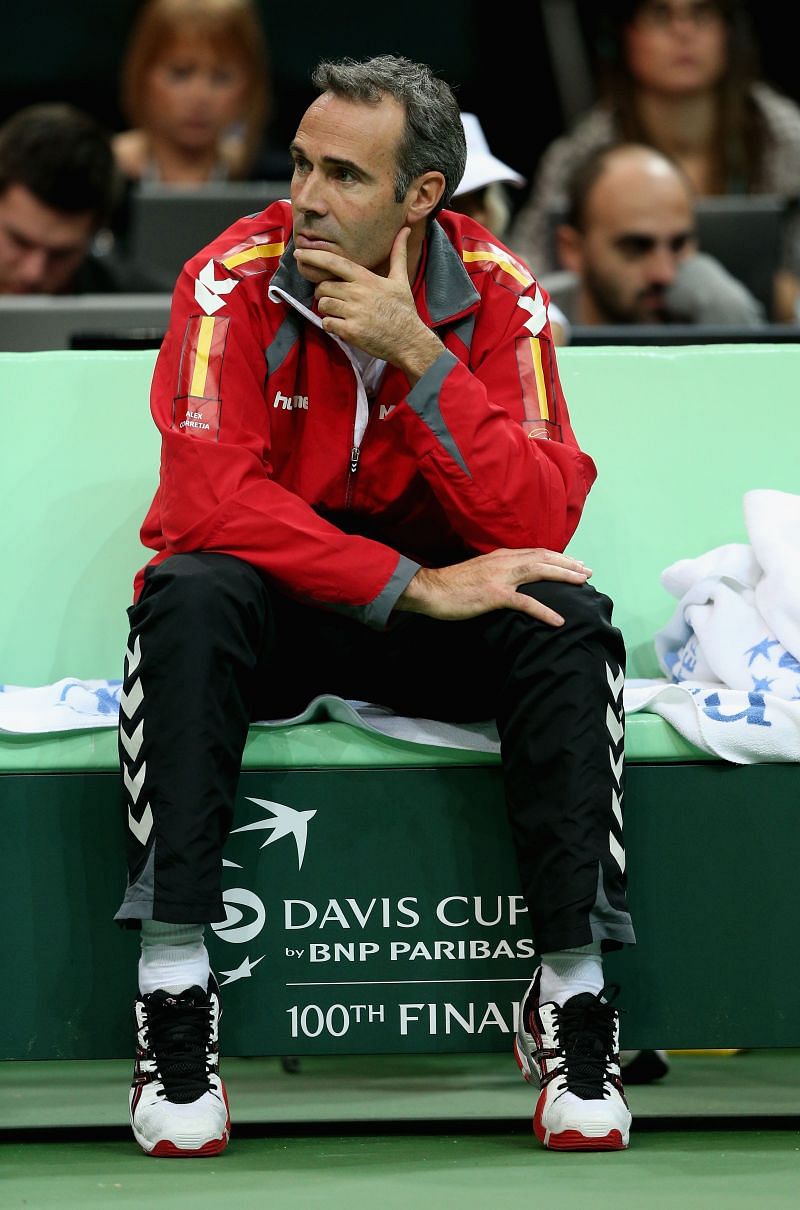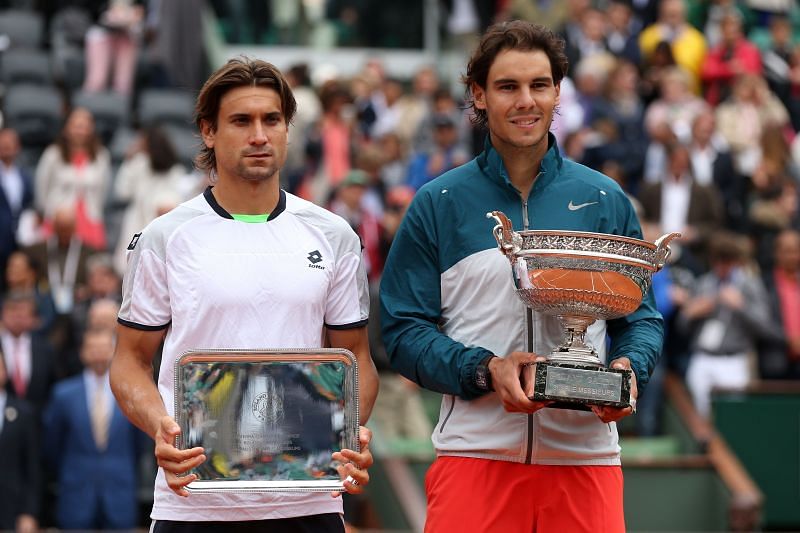
Why do Rafael Nadal & other Spaniards excel at Roland Garros? Alex Corretja explains

Rafael Nadal is the most successful player to have set foot on the terre battue of Roland Garros. He has provided countless memorable moments on clay over the years, winning a staggering 12 French Ope titles.
But Nadal is not the only Spaniard who has left a mark in Paris, even though he might be far and away the most prominent one. Several of Rafael Nadal's countrymen, like Juan Carlos Ferrero, Carlos Moya, Sergi Bruguera, Albert Costa and David Ferrer have enjoyed immense success on the red clay of Paris.
But what is the reason behind their affinity to the claycourt Major? Former World No. 2 Alex Corretja - himself one of the successful Spaniards at Roland Garros - explained the phenomenon in detail during his chat with Daniela Hantuchova yesterday.
Spaniards play with a lot of topspin: Corretja

Giving his thoughts on what gives Spaniards the edge, Alex Corretja said, "Mainly we (Spaniards) grew up playing on clay, so we grew up playing a lot of topspin."
Corretja's statement is backed by hard evidence too. Throughout the last 15 years we have seen Spaniards like Rafael Nadal hold off their opponents with loopy topspin and lightning-quick footwork.
"When you play topspin the ball bounces high to the opponent, it means you don't make too many mistakes," Corretja said. "It means physically you need to develop your game a lot because you're not going to make winners after two, three shots."
In other words, players who grow up using a lot of topspin also tend to be more patient than others. That's been a hallmark of many of Rafael Nadal's victorious runs in Paris; he not only pushes his opponents behind the baseline with his high-bouncing missiles, he also outlasts them with his consistency and discipline.
Alex Corretja used his own example to elaborate on the ploy that has helped Spaniards like Rafael Nadal make Roland Garros their second home. "I didn't want to hit any winner, I just wanted to move my opponent around for 30 mins and let the score say - Oh Jesus, it's only 2-1. Because I play someone not used to it and after 30 mins, if they see it's 1-1 Deuce, then they're gonna give up," he said.
Corretja added that this culture is prevalent not just in Spanish players like Rafael Nadal, but in Argentine players as well. Grinding out rallies from the baseline, rather than taking risks and aiming for the lines, is what helps the claycourters steal a march over their more powerful opponents.
When you play a Spanish guy at Roland Garros you know it's going to be a battle: Corretja

Rafael Nadal made history at the 2017 French Open, when he became the first player ever to win a Grand Slam event 10 times. To mark this dominance, the organizers of the tournament decided to gift him a replica of the French Open trophy, with “Rafael Nadal’s Tenth” engraved on it.
It was a special moment not just for Nadal, but for Spanish tennis as a whole. Two years later, Rafael Nadal won the 2019 French Open beating Austrian Dominic Thiem in the final, thus continuing Spain's reign over Paris.
Corretja stressed on the importance of point-construction on clay, which Rafael Nadal and so many other Spaniards - including David Ferrer - have mastered. According to Corretja, the key to winning on clay is to think of your moves ahead of time, rather than looking to end a point with a single swing of the racquet.
"On clay you have to play like chess, you need to move here and you need to move there. It reinforces your mind because you know you might spend three or four hours to win a match," Corretja said.
The relative difficulty of hitting winners on clay is exploited to perfection by Spaniards, according to Corretja. For instance, Novak Djokovic can belt his backhand out of Rafael Nadal's reach quite regularly on other surfaces, but not on clay. And every time Djokovic fails to put the ball away when he attempts to strike a winner, Nadal makes him pay.
"If you are from different countries than Spain, you hit the ball, you really feel it, you can hit a winner after one backhand down the line," Corretja said. "Here (as a Spaniard) you can survive, you can go out again, you can restart.
"When you reach Roland Garros and play a Spanish guy, you know it's gonna be a battle," Corretja finished dramatically.